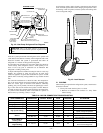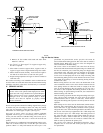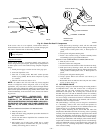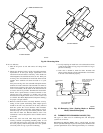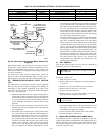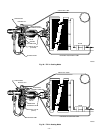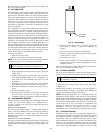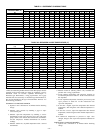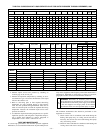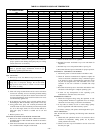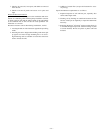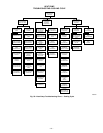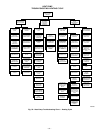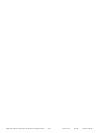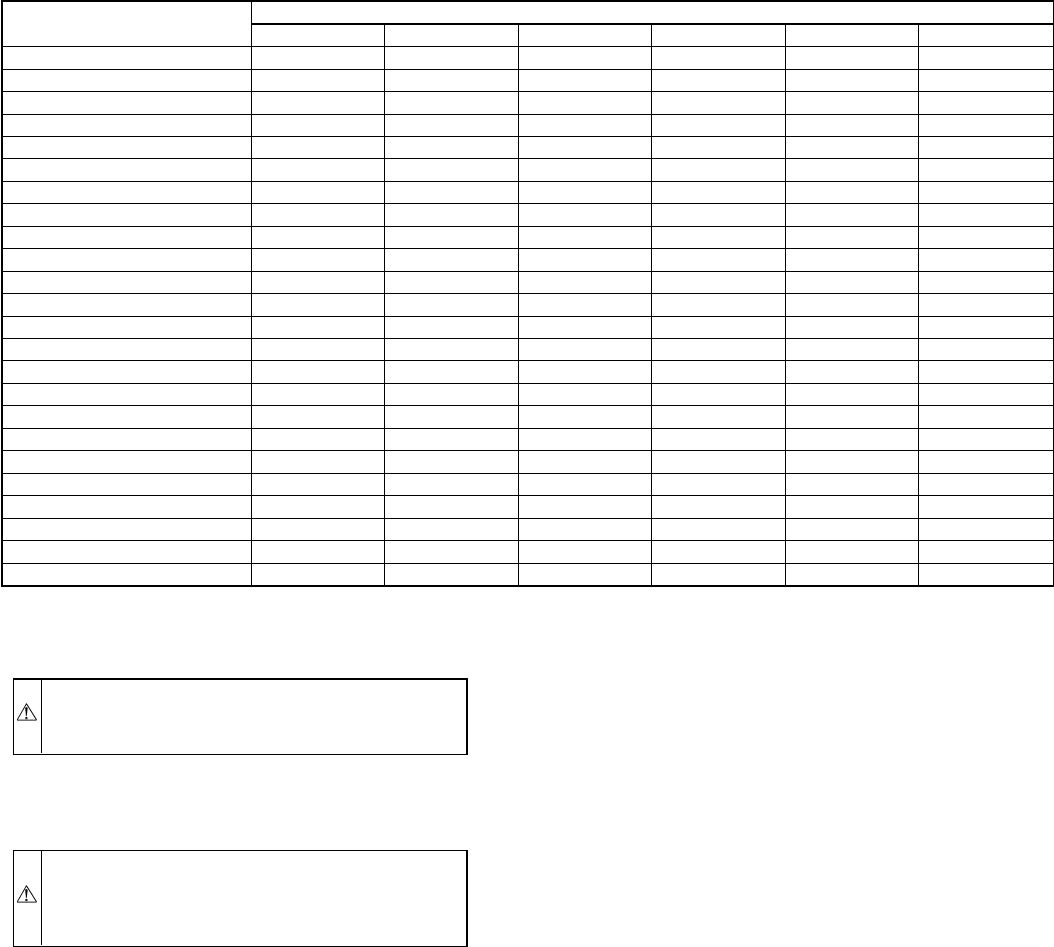
3. Check electrical connections for tightness and controls for
proper operation each heating (heat pump only) or cooling
season and service as necessary.
CAUTION: Because of possible damage to the equip-
ment or personal injury, maintenance should be per-
formed by qualified personnel only.
COIL CLEANING
1. Remove top cover. See Remove Top Cover section.
CAUTION: Coil fin damage can result in higher oper-
ating costs or compressor damage. Do not use flame,
high-pressure water, steam, or volatile or corrosive clean-
ers on fins or tubing.
2. Clean coil using vacuum cleaner and its crevice tool. Move
crevice tool vertically, close to area being cleaned, making
sure tool touches only the dirt on the fins and not the fins.
To prevent fin damage, do not scrub fins with tool or move
tool horizontally against fins.
3. If oil deposits are present, spray coil with ordinary house-
hold detergent. Wait 10 minutes, and proceed to next step.
4. Using garden hose, spray coil vertically downward with
constant stream of water at moderate pressure. Keep nozzle
ata15° to 20° angle, about 3 in. from coil face and 18 in.
from tube. Spray so debris is washed out of coil and
basepan.
5. Restore power to unit.
CLEANING OUTDOOR FAN MOTOR AND BLADE
1. Remove fan motor and blade. Refer to Remove Fan-Motor
Assembly section of this manual. Be careful not to bend or
dent fan blade.
2. Clean motor and blade with soft brush or cloth. Be careful
not to disturb balance weights on fan blade.
3. Check fan-blade setscrew for tightness.
4. Reinstall fan motor and blade to top cover and check for
alignment.
5. Reinstall top cover and position blade as per Fig. 24.
6. Reconnect electrical power and check for proper operation.
ELECTRICAL CONTROLS AND WIRING
1. Disconnect power to both the outdoor and indoor units.
2. Check all electrical connections for tightness. Tighten all
screws on electrical connections. If any connections appear
to be burned or smoky, disassemble the connection, clean
all parts and stripped wires, and reassemble. Use a new
connector if old one is burned or corroded and crimp
tightly.
3. Reconnect electrical power to the indoor and outdoor units
and observe unit through 1 complete operating cycle.
4. If there are any discrepancies in the operating cycle,
troubleshoot to find the cause, and correct.
REFRIGERANT CIRCUIT
1. Check the refrigerant charge using the superheat or sub-
cooling method, whichever is applicable. If low on charge,
check unit for leaks using an electronic leak detector.
2. If any leaks are found, recover or isolate charge (pump-
down) if applicable and make necessary repairs.
3. Evacuate, recharge, and operate unit through entire cycle.
FINAL CHECKOUT
After the unit has been operating, the following items should be
checked:
1. Check that unit operational noise is not excessive due to
vibration of components, tubing, panels, etc. If present,
isolate problem and correct.
2. Check to be sure caps are installed on service valves and
that they are tight.
TABLE 24—REQUIRED LIQUID-LINE TEMPERATURE
PRESSURE (PSIG)
AT SERVICE FITTING
REQUIRED SUBCOOLING TEMPERATURE (°F)
0 5 10 15 20 25
134 76 71 66 61 56 51
141 79 74 69 64 59 54
148 82 77 72 67 62 57
156 85 80 75 70 65 60
163 88 83 78 73 68 63
171 91 86 81 76 71 66
179 94 89 84 79 74 69
187 97 92 87 82 77 72
196 100 95 90 85 80 75
205 103 98 93 88 83 78
214 106 101 96 91 86 81
223 109 104 99 94 89 84
233 112 107 102 97 92 87
243 115 110 105 100 95 90
253 118 113 108 103 98 93
264 121 116 111 106 101 96
274 124 119 114 109 104 99
285 127 122 117 112 107 102
297 130 125 120 115 110 105
309 133 128 123 118 113 108
321 136 131 126 121 116 111
331 139 134 129 124 119 114
346 142 137 132 127 122 117
359 145 140 135 130 125 120
—46—



